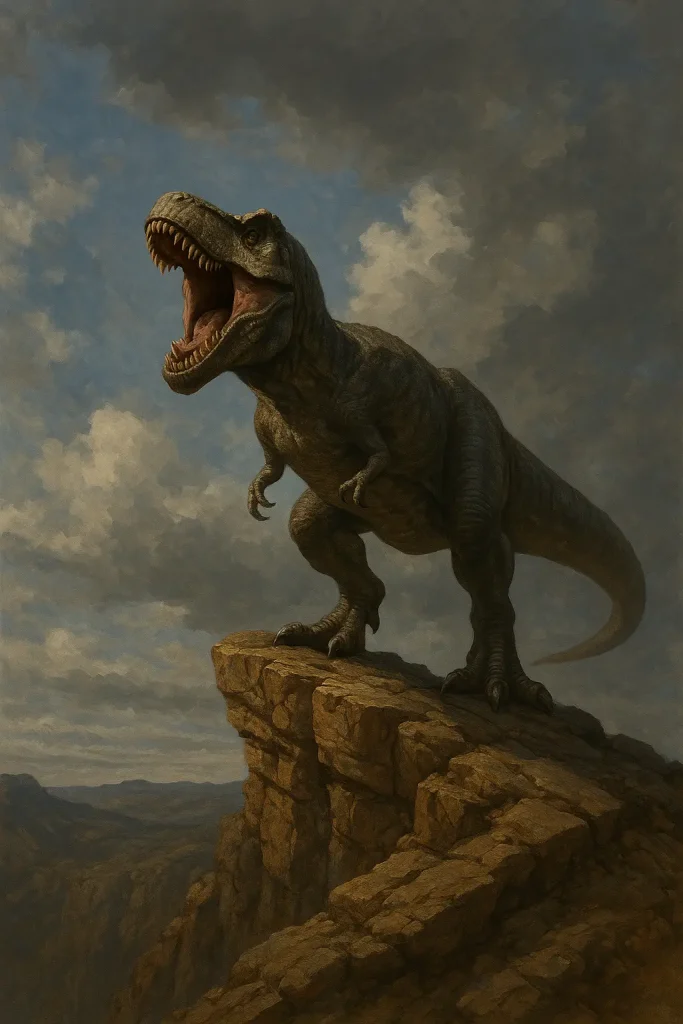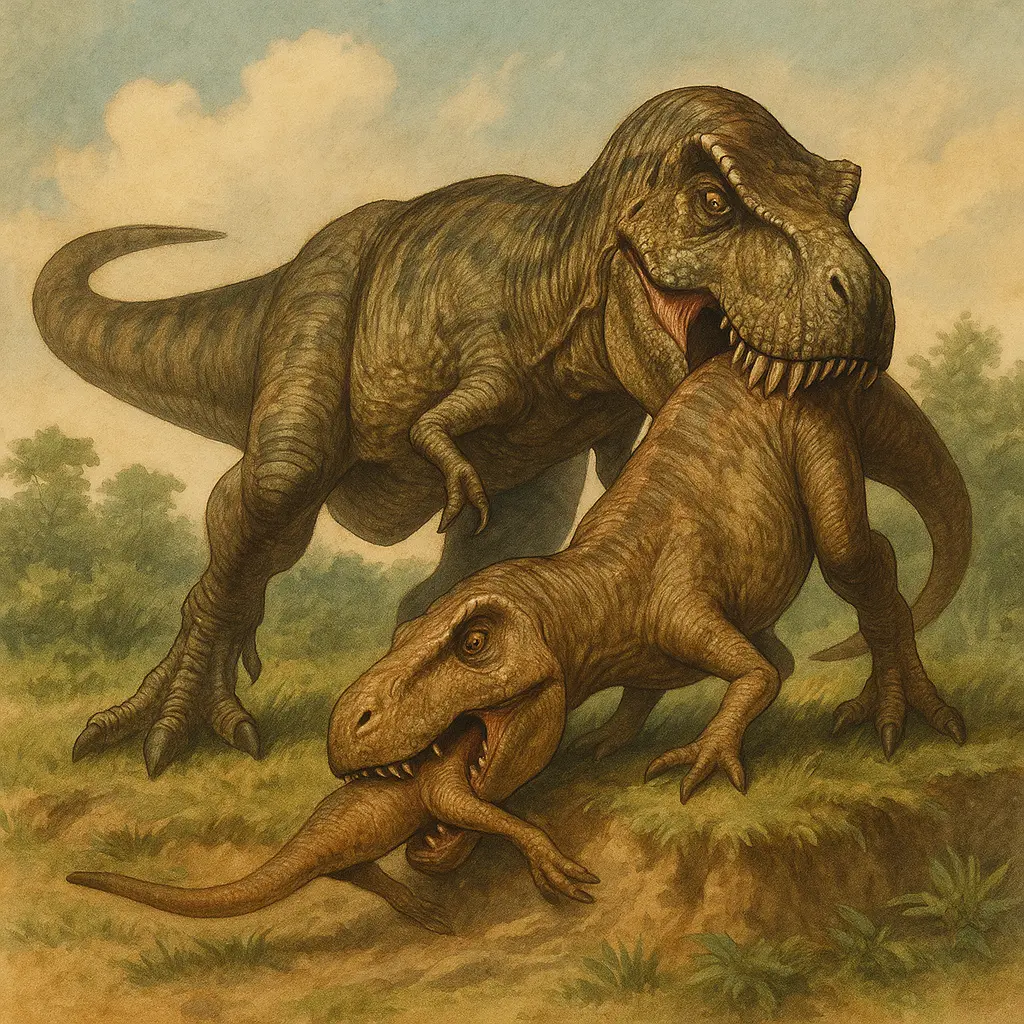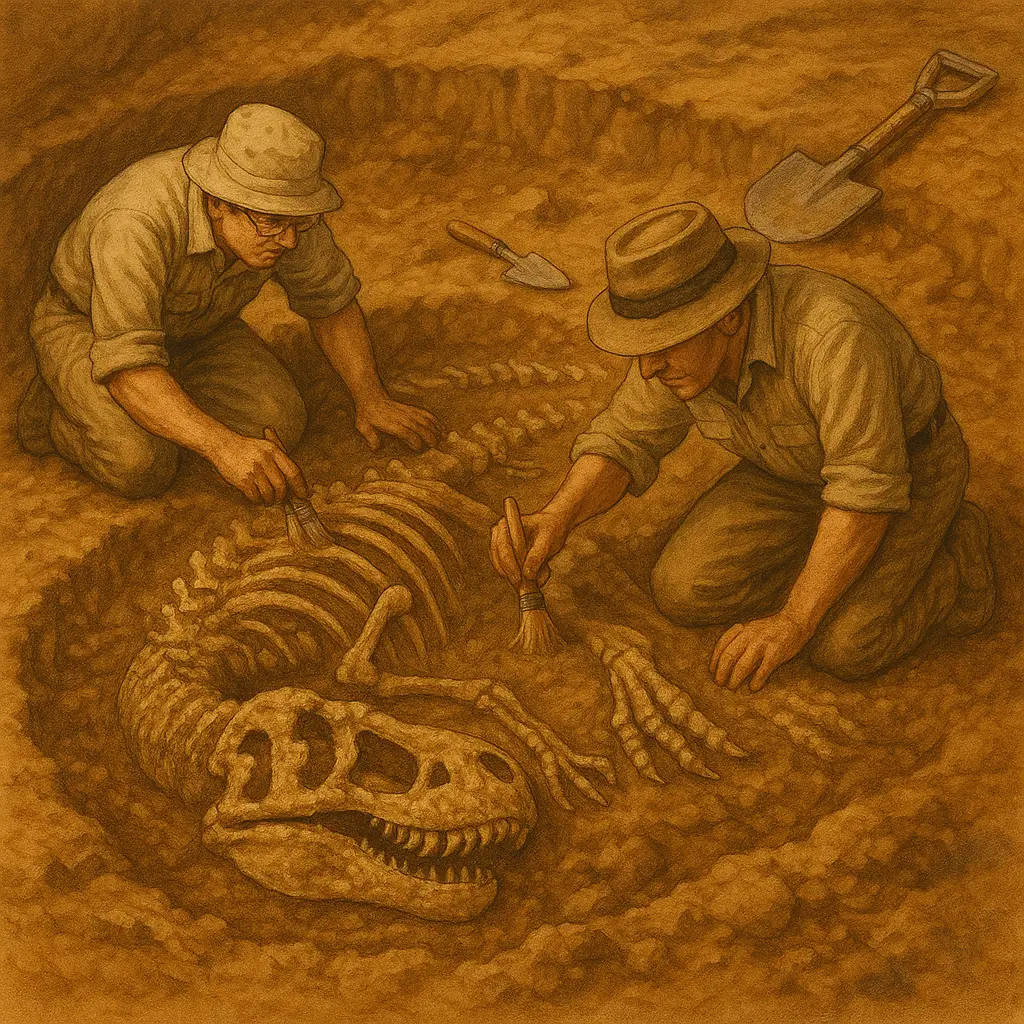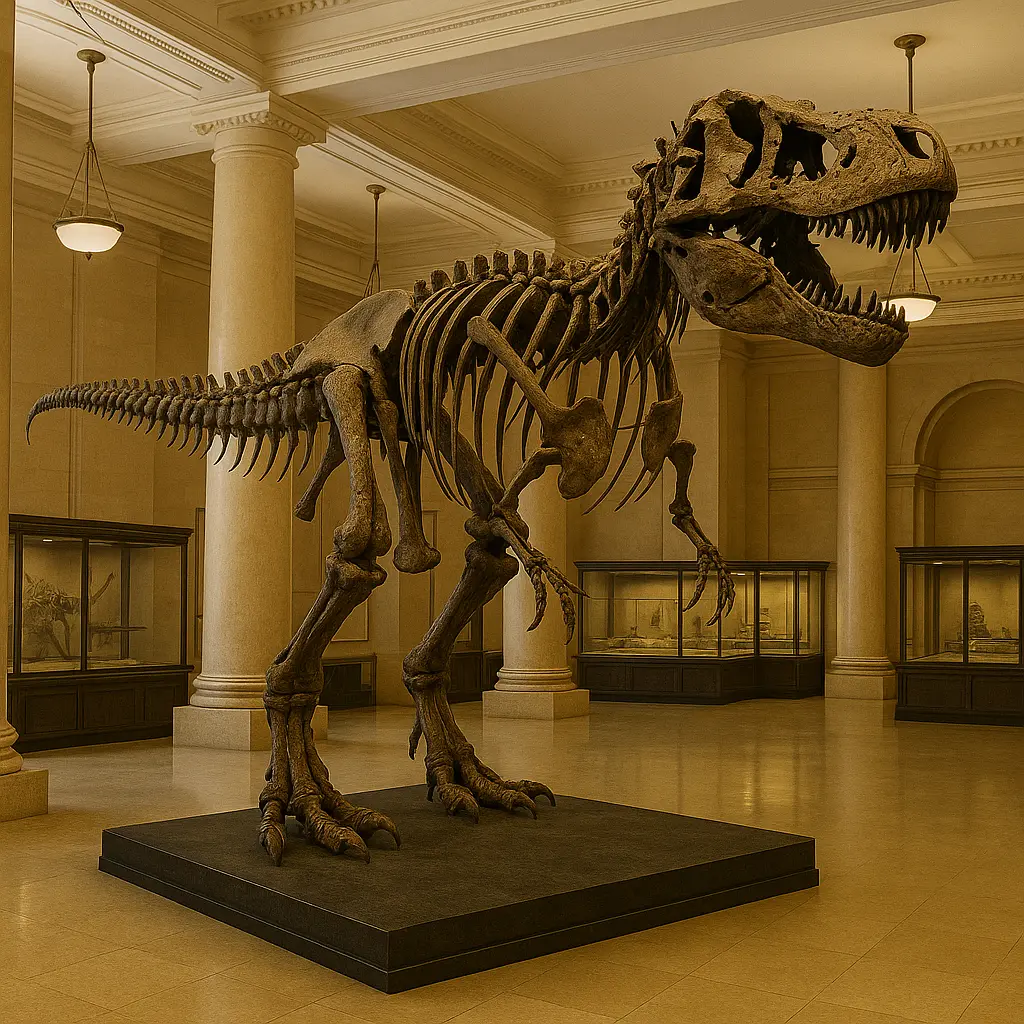Introduction
Have you ever wondered about T. rex characteristics? They’re truly captivating! Tyrannosaurus rex, commonly known as T. rex, reigned as a formidable predator millions of years ago. This iconic dinosaur roamed the Earth 66 to 68 million years ago during the Late Cretaceous period. Now, in May 2025, its enduring legacy continues to intrigue people worldwide. Therefore, this article will delve deeply into T. rex characteristics. We’ll also explore its discovery, diet, and extinction in detail. Curious about this ancient giant? Let’s embark on this fascinating journey together!
T. rex was an awe-inspiring creature of its era. Its fossils leave both scientists and children in wonder. How did it assert dominance over its environment? Its sheer strength and massive size set it apart from others. Moreover, its unique traits fuel ongoing scientific discussions. T. rex characteristics offer clues to its survival strategies. For example, its bite force was extraordinarily powerful. Additionally, it thrived in what is now North America. Its extinction remains a mystery to experts. This predator played a vital role in ancient ecosystems. Today, museum exhibits highlight its might. Children learn about it through interactive displays globally. Its presence in movies, books, and video games is undeniable. Modern archaeology employs cutting-edge techniques to study it. These advancements reveal new fossils each year. What caused its disappearance? Join me to uncover the answers.
Beyond science, T. rex holds cultural significance. Films like Jurassic Park immortalized its image. Books and games keep its story alive for new generations. Archaeologists use tools like ground-penetrating radar now. These tools enhance our understanding of its world. Its fossils spark imagination across all ages. This article will expand on these aspects thoroughly. Let’s begin with its defining traits next.

What Made T. Rex a Unique Hunter?
T. rex characteristics distinguish it as an exceptional predator. It measured up to 12 meters in length and stood about 4 meters tall. Its weight could reach an impressive 9 tons. The T. rex had a colossal skull, exceeding 1.5 meters in length. Its jaws housed 60 sharp, serrated teeth, each a deadly weapon. Some teeth grew as long as 20 centimeters. Among its standout features, its hind legs were incredibly strong. In contrast, its arms were notably small, only about 1 meter long. Its thick neck supported its massive head effortlessly. A robust, flexible spine added to its formidable structure.
T. rex characteristics also reveal a body built for power. Its long tail provided balance for its heavy frame. Its eyes faced forward, granting excellent depth perception. This feature sharpened its hunting precision. Its bones were dense and exceptionally durable. Furthermore, its bite force peaked at 35,000 newtons—an astonishing strength. Such power could shatter bones with ease. Its skin might have featured scales or even feathers. Evidence suggests juveniles had feathered coats. Its sense of smell was acute, detecting prey from miles away. Its hearing was finely tuned to locate rivals or threats. These attributes crowned it a supreme predator. Surprisingly, it was agile despite its size. Its muscles enabled bursts of speed during chases. Its legs allowed quick pivots while pursuing prey. Thus, T. rex characteristics underscore its reign as a hunter.
Let’s expand on its physical prowess further. Its skeletal structure absorbed immense stress. Muscle attachments indicate explosive power in its legs. Its tiny arms, though small, were strong for gripping. Theories suggest they aided in rising from rest. Its skull design maximized jaw strength efficiently. These details enrich our view of its capabilities. Now, let’s trace how we learned about this beast.

The Journey of T. Rex Discovery
T. rex discovery kicked off over a century ago with a groundbreaking find. In 1902, paleontologist Barnum Brown unearthed the first T. rex skeleton. He discovered it in Montana’s Hell Creek Formation. This revelation stunned the scientific community. In 1905, Henry Fairfield Osborn officially named it Tyrannosaurus rex. The name, translating to “tyrant lizard king,” suits its terrifying reputation. Finding fossils was challenging back then. Early excavations battled harsh weather and rugged terrain. Dedicated teams persevered in isolated regions to uncover history.
T. rex discovery evolved with time and technology. In 1990, a remarkable skeleton named Sue was found. Nearly complete, Sue now resides at Chicago’s Field Museum. This fossil shed light on T. rex growth and anatomy. For instance, it clarified how T. rex matured over time. Later finds, like T. mcraeensis, hinted at earlier relatives. These discoveries broadened our understanding significantly. Today, 3D scanning revolutionizes fossil analysis. Sites in Canada have also yielded T. rex remains. Advanced mapping tools pinpoint fossil-rich zones accurately. Drones now assist researchers in spotting buried bones. These innovations yield fresh insights annually. Thus, T. rex discovery has transformed paleontology.
Early diggers used picks and shovels tirelessly. Modern teams employ laser imaging for precision. Each find builds on past efforts seamlessly. Hell Creek remains a fossil hotspot today. Collaborative expeditions uncover fragments yearly. These efforts deepen our grasp of T. rex’s world. Next, we’ll examine what fueled this predator’s life.

What Fueled T. Rex’s Daily Life?
T. rex diet showcases its prowess as a top-tier predator. It primarily targeted large herbivorous dinosaurs for sustenance. Triceratops and Edmontosaurus topped its prey list. Fossilized bite marks on their bones confirm this. A T. rex could devour up to 100 kilograms of meat in one meal. Its mighty jaws pulverized bones effortlessly. Additionally, it likely scavenged when opportunities arose. This adaptability ensured its survival in tough times. Its digestive system processed even the toughest tissues.
T. rex diet extended beyond live kills to include carrion. Fossilized coprolites—dung—contain bone shards, proving this. Its sense of smell rivaled the best modern hunters. It could sniff out carcasses from great distances. Moreover, its teeth were designed to rip flesh apart. Some experts propose it hunted in packs occasionally. Yet, no fossil evidence shows group burials. It likely clashed with other meat-eaters over food. Subtle clues suggest teamwork during ambushes. Thus, T. rex diet reflects its relentless nature.
Its claws, though less studied, aided in gripping prey. Its stomach acid broke down bone efficiently. Competition with smaller carnivores shaped its habits. Scavenging supplemented its energy needs cleverly. These traits paint a fuller picture of its feeding. Let’s now explore why it vanished from Earth.

What Led to T. Rex’s Disappearance?
T. rex extinction struck 66 million years ago, ending its dominance. A colossal asteroid slammed into Earth, unleashing chaos. This impact ignited widespread fires and darkened the skies. Temperatures plummeted, creating a prolonged nuclear winter. Plants withered, collapsing the food chain entirely. T. rex struggled to find sufficient prey. Its massive size turned into a fatal weakness. Smaller animals adapted more readily to scarcity. Its offspring faced bleak survival odds too.
T. rex extinction wasn’t solely due to the asteroid. Volcanic eruptions spewed toxic gases into the air. Acid rain ravaged ecosystems further over time. T. rex fossils vanish from the record here. No signs indicate it adapted to these shifts. Additionally, diseases may have decimated its numbers. Climate changes reshaped habitats beyond recognition. The asteroid’s impact delivered the final blow. Thus, T. rex extinction closed a prehistoric chapter.
Dust lingered for years, choking plant life. Eggs likely failed to hatch in cold conditions. Predators like T. rex bore the brunt hardest. Smaller scavengers outlasted them by far. These factors combined to erase T. rex forever. Let’s conclude this exploration now.

Leave a Reply